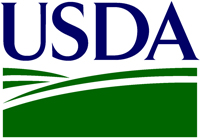 Eliminating weed seeds before they can establish new plants is a practical and effective means of weed control in crop farming in certain parts of the world. At grain harvest, removing the weed seed often becomes a missed opportunity, and a tremendous amount of weed seeds are left on the field. Harvesting weed seeds can prevent them from becoming part of the soil seed bank.
Eliminating weed seeds before they can establish new plants is a practical and effective means of weed control in crop farming in certain parts of the world. At grain harvest, removing the weed seed often becomes a missed opportunity, and a tremendous amount of weed seeds are left on the field. Harvesting weed seeds can prevent them from becoming part of the soil seed bank.
A study featured in the journal Weed Technology tested the seed retention of four dominant weed species plaguing Australian crop production. A high seed retention rate (with low early shatter rates) shows potential for the use of harvest weed seed systems to reduce the amount of seed from being reintroduced into the field.
To assess the seed retention and thus establishing the probability of harvesting success, researchers collected annual ryegrass, wild radish, brome grass, and wild oat plants from nine wheat fields in Western Australia at the time of wheat harvest. Plants were cut at 15 cm (approximately 6 inches) above the ground level and bagged. Plants and seeds were collected at the beginning of the wheat harvest and every 7 days thereafter for 28 days.
Although the nine sites were widely dispersed and experienced varying climatic conditions, the weed seed dispersion patterns were similar. At wheat crop maturity, the average proportions of seed production retained for the weeds were: 85% of ryegrass, 99% of wild radish, 77% of brome grass, and 84% of wild oat. Additionally, this high seed retention persisted throughout the 28-day harvest period for ryegrass and wild radish.











